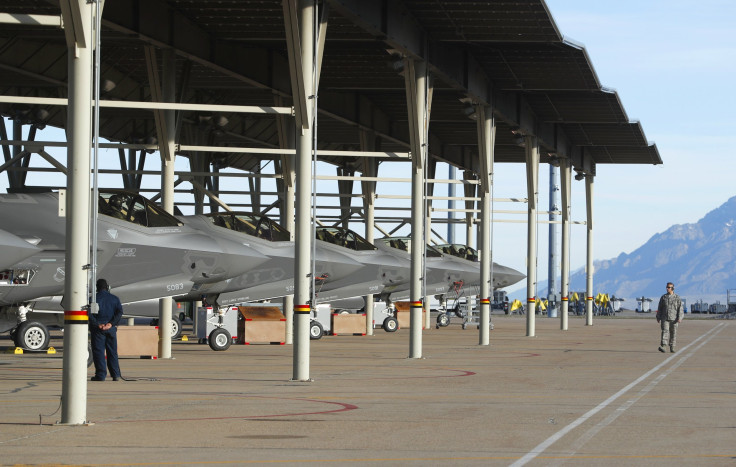Lockheed Martin's F-35 Reliability Not Improving, Defense Department Report Says

The efforts made to enhance the reliability of Lockheed Martin’s F-35 planes have gone “stagnant” due to various reasons, which included aircrafts having to wait for long intervals to get spare parts from the contractor, Pentagon’s testing office stated.
The Defense Department's new director of operational testing, Robert Behler, said, in a yearly report presented to senior Pentagon leaders and congressional committees Tuesday, the availability of F-35 jets for a mission remained “around 50 percent, a condition that has existed with no significant improvement since October 2014, despite the increasing number of aircraft,” Bloomberg reported.
The report talked about the current condition of the F-35 project, and said the most expensive United States weapons system was scheduled to move out of its 16-year-old developmental phase in 2018. The report continued by claiming that the program would move on towards the combat testing phase, which would take one year. It was also noted the combat testing exercise was already delayed by 12 months. Battle testing of the planes are an essential step before the aircrafts get the seal of approval for full-rate production.
The article then said Pentagon officials like Deputy Defense Secretary Patrick Shanahan, along with Under Secretary of Defense for Acquisition, Technology and Logistics Ellen Lord, stressed on the reduction of F-35’s $406.5 billion estimated acquisition cost and its predicted $1.2 trillion price tag for its long-term working and support through 2070.
However, the Defense Department was still working towards contracting and producing the fighter planes, regardless of the technical and dependability issues the planes are facing in the current phase of development testing.

Some of those issues included numerous aircrafts waiting for spare parts to arrive, difficulties related to the electro-optical targeting system and defects in the launching of air-to air missiles and GPS-guided air-to-ground munitions during the testing of weapons.
The report stated 31 variations were made in the final version of the aircraft’s complicated software and it still hasn’t been deployed due to “key remaining deficiencies.” Additional issues such as less sturdy tires of the F-35B plane also caused trouble, according to the report.
According to the operations testing office, the forthcoming test, which would provide “the most credible means to predict combat performance, likely will not be completed until” Dec. 2019.
Spokesman for the Pentagon’s F-35 program, Joe DellaVedova, and Lockheed Martin’s spokeswoman Carolyn Nelson did not comment on the report.
The article stated Nelson previously said in a statement the deliveries of 66 F-35 aircrafts in the previous year represented “more than a 40 percent increase from 2016, and the F-35 enterprise is prepared to increase production volume year-over-year to hit full rate of approximately 160 aircraft in 2023.”
It was reported last year operational and support costs of Lockheed Martin’s F-35 planes would rise if the falling reliability of the weapon’s system program did not improve, as stated by the Defense Department’s testing office.
A Bloomberg report from June 2017 stated the parts of the aircrafts weren’t dependable and the time taken for their repairs was more than expected. According to a presentation made by the director of operational testing for defense officials and congressional aides, 20 percent of the aircrafts had to wait for spare parts in depots because the suppliers couldn’t match up to the level of expanding productions when fixing the spare parts.
© Copyright IBTimes 2024. All rights reserved.






















